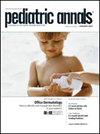将罕见病生长监测纳入常规实践以提高遗传条件的早期识别和诊断。
IF 1
4区 医学
Q3 PEDIATRICS
引用次数: 0
摘要
常规生长监测包括在世界卫生组织或疾病控制和预防中心的图表上绘制儿童,这些图表主要是在典型的健康人群中开发的。然而,如果有特殊生长曲线(SGCs),建议将已知遗传条件的儿童绘制在特定生长曲线(SGCs)上。在这篇综述中,我们强调了SGCs可用于最常见的遗传疾病,基于特定罕见疾病使用SGCs的临床原因,以及如何发现这些SGCs。此外,我们提高了对SGCs的局限性和未来发展方向的认识,以提高罕见病生长曲线的可及性和易用性,以用于普通儿科实践。本文章由计算机程序翻译,如有差异,请以英文原文为准。
Incorporating Rare Disease Growth Monitoring Into Routine Practice to Improve Early Recognition and Diagnosis of Genetic Conditions.
Routine growth monitoring includes plotting children on World Health Organization or Centers for Disease Control and Prevention charts that have primarily been developed on typical, healthy populations. However, it is advisable to plot children with known genetic conditions on specialized growth curves (SGCs) when they are available. In this review, we highlight the most common genetic conditions for which SGCs are available, clinical reasons to use SGCs based on specific rare diseases, and how these SGCs can be found. In addition, we raise awareness of the limitations of SGCs and future directions to improve rare disease growth curve accessibility and ease of use into general pediatric practice.
求助全文
通过发布文献求助,成功后即可免费获取论文全文。
去求助
来源期刊

Pediatric Annals
医学-小儿科
CiteScore
1.80
自引率
0.00%
发文量
104
审稿时长
2 months
期刊介绍:
Published for more than 40 years, Pediatric Annals is an online-only, monthly medical review journal dedicated to providing pediatricians and other clinicians with the latest practical information on the diagnosis and treatment of pediatric diseases and disorders. Begin to explore the Journal and all of its great benefits such as:
-Single-topic summary reviews of important trends in pediatric medicine
-Access to current articles, as well as several years of archived content
-Columns including Healthy Baby/Healthy Child and Case Challenges
 求助内容:
求助内容: 应助结果提醒方式:
应助结果提醒方式:


